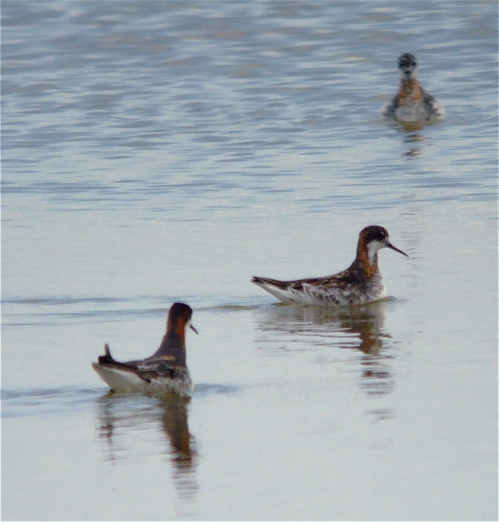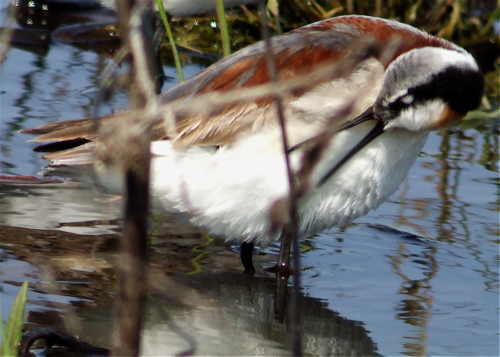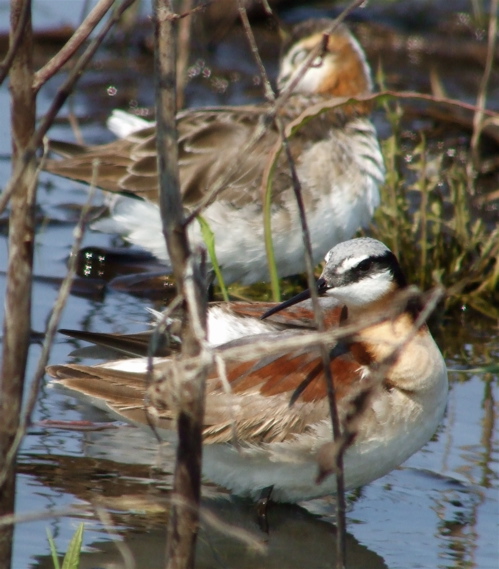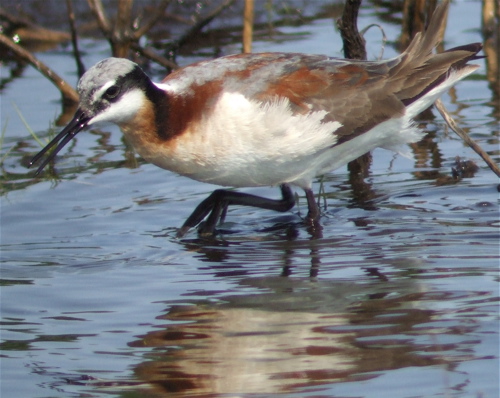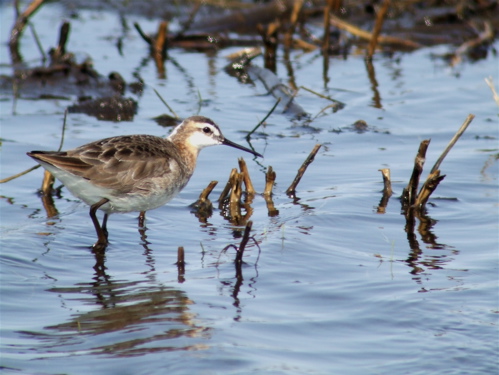I found some phalarope photos that I had forgotten about. These are some red-necked phalaropes that we saw on the Steppes in Kazakhstan. When you are learning shorebirds, phalaropes are ones that can be easy to distinguish from the others, they have a unique shape, can be quite colorful and they are just plain fun to watch. They spin around in the water kicking up sediment and food below. No matter what country you are in, you can spot that spinning characteristic easily if they are around.
Plus, phalaropes are so pretty, look at that burgundy highlighted with delicate gray and white, touched off with some black. Above is a Wilson's phalarope seen in a pothole just outside of Arrowwood NWR in North Dakota during the Potholes and Prairie Bird Festival. That's a great thing about North Dakota, just driving to your destination will reveal great birds. We couldn't get into the NWR because of the flooding, so we just drove around it and in the puddles were birds. I was with my friend Katie and she would pull the van over while I sat in the back, opened the side door and digiscoped the phalaropes. Birds tend to not mind vehicles, just what comes out of a vehicle.
Here's a pair of Wilson's phalaropes preening. If you are not familiar with phalaropes, you might think that is the male in the front of the pair. It's not, that's the female.
In phalarope world, you have a great term to use that you can impress your friends with at parties: reverse sexual dimorphism. The females are more colorful and they pursue the males. They defend a territory and once they have attracted a male and mated, she lays the eggs and heads south to get a head start on migration while the males stays behind to incubate the eggs and raise the young.
Here's a shot of just the male, he is not colorful since he's going to be the one sitting in one spot to incubate the eggs. It's interesting that the female doesn't partake of any of the chick rearing duties. She doesn't bring food to the male while he incubates, she doesn't give him a break, nothing. It's wham, bam, thank you ma'am, she lays the eggs and then says, "See ya!"
I wonder if female phalaropes ever get guilt for putting their migration before their offspring?

